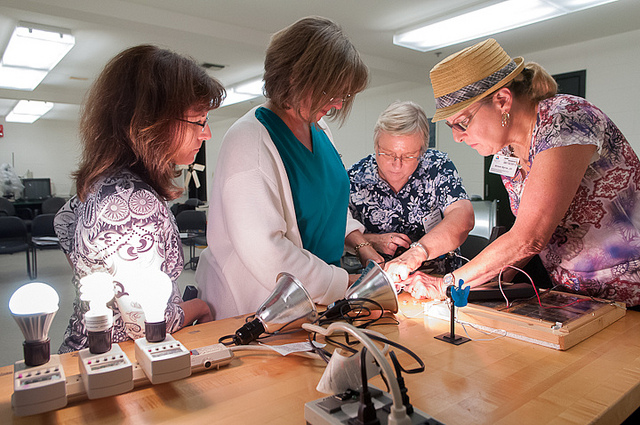I recently wrote up an overview of the sociological and legal definitions of sexism, which you can find on the STEM Women website. Sexism describes the ideology that one gender is superior to another. To put it another way, it’s a system of attitudes, beliefs, stereotypes, and other types of bias that perpetuate the idea that women are somehow lesser than men. These attitudes may or may not be voiced overtly, but they nevertheless guide social interaction and behaviour.
The word “sexism” has taken on a life of its own in the public imagination, when people joke about what it is, even suggesting that there’s such a thing as “reverse sexism” (there isn’t), typically when denouncing affirmative action or gender quotas at work. The scientific meaning of sexism is lost when people argue about what sexism is or isn’t. Many people think sexism is subjective. That’s incorrect.
There are different terms floating around that often confuse people. For example, hostile sexism is the type of overt physical and verbal aggression people often think about when they think of “sexism.” Benevolent sexism includes inappropriate “compliments” that focus on a woman’s looks, which inadvertently reproduce the idea that women should be judged primarily on their physical appearance and sexuality.
“Unintentional” or “accidental” sexism encompasses the “jokes,” comments and behaviour that people put down to ignorance. This includes everything from putting up pictures of semi-naked women at work, “overlooking” women on meeting invites or other career opportunities, and “casual remarks” and “oversights” like speaking about professionals, such as engineers, using the pronoun “he.”
In the STEM Women article, I show that these various terms and the attitudes and behaviours described by hostile, benevolent and unintentional sexism are all the same: they are all examples of sexism. The fact that one person might view one example as more extreme than another has no bearing on the impact these attitudes and behaviours have on women. Their cumulative effect is that women are denigrated, undervalued and expected to “put up” with sexism.
The sociological concept of everyday sexism captures the idea that everyday social exchanges, whether they’re “benevolently,” “unintentionally” or “accidentally” sexist, are actually connected to broader issues in sexist culture, such as sexual harassment and institutional discrimination. Sexism is more than the things that we say and do: it’s about the prejudices that underpin sexist culture. It’s about all the individual and collective things we do and say that makes possible sexual harassment and discrimination.
You can read more about the legal definitions and evidence of how sexism manifests in science over on our STEM Women website.
In our recent STEM Women panel discussion, we talked about the sociological definition of everyday sexism, which demonstrates how everyday social exchanges between individuals are connected to institutional discrimination. Specifically, how conversations between academic colleagues that are sometimes called “benevolent” or “unintentional” sexism, are actually the outcome of systemic issues of gender inequality. This includes “jokes” that play on a woman’s gender and sexuality (“You’re a cheap date”); complimenting a woman on her looks and propositioning a junior colleague at a conference; and critiquing a woman scientist for the way she speaks, such as saying she’s “too aggressive” in negotiations or “not nice enough” when addressing sexism (this is often known as “tone policing”).
We also covered the recent case where the Journal of Proteomics published a photo of a bare chested woman in an abstract to promote a scientific paper, which STEM Women critiqued. Finally we discussed how, even in professional contexts, people often discuss women scientists as mothers and wives first, rather than focusing on their professional achievements. For example in The New York Times obituary of rocket scientist Yvonne Brill.
Everyday sexism shows that women’s gender is a both a barrier to professional recognition, as well as a heavily policed focal point of scrutiny.
People think these seemingly innocuous examples of sexism are subjective – that women should just take a joke and not be “so sensitive.” We showed how social science actually connects these everyday comments to the professional barriers that women face in their scientific careers. This includes women’s pay, their career progression and professional esteem, their publications, women’s contribution and participation in STEM, and other more overt forms of workplace discrimination and sexual harassment.


